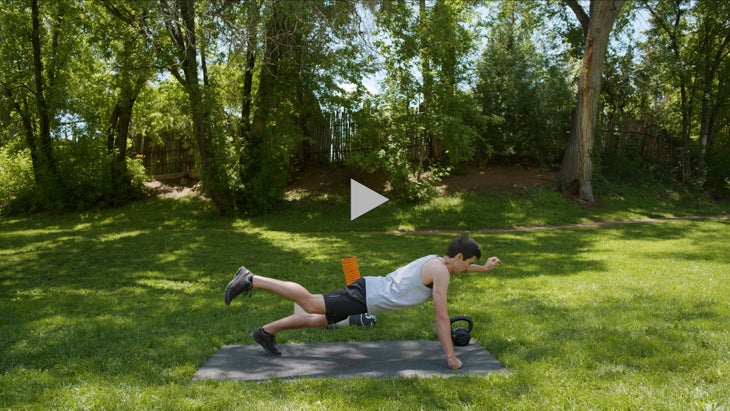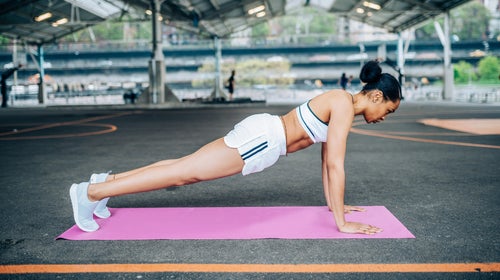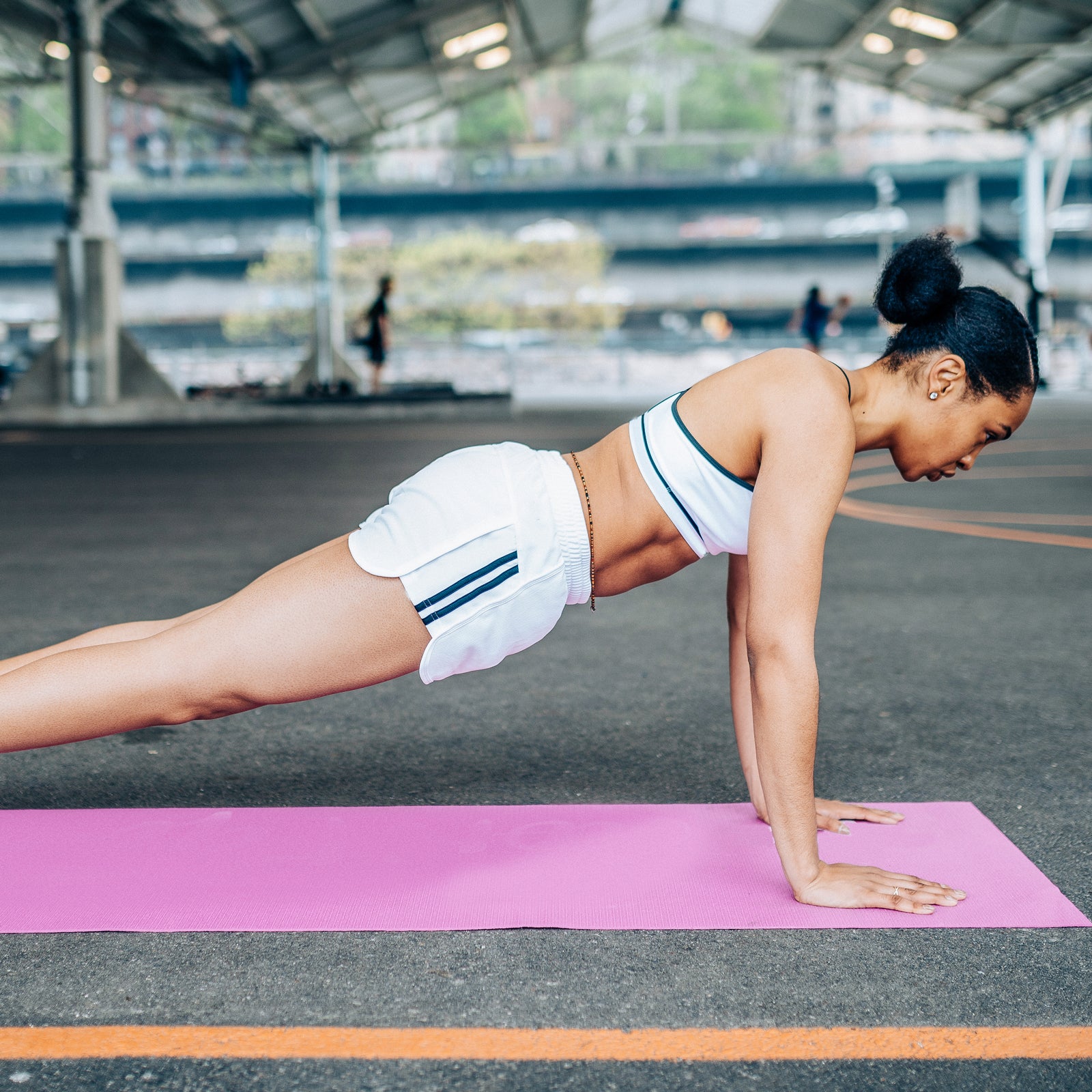“You can’t fire a cannon from a canoe,” said the late Canadian strength coach and author Charles Poliquin. In other words, it doesn’t matter how strong you are if you don’t have a solid base to produce and transfer power. Stability must precede force production, he explained, and that stability comes from the core.
Core musculature is much more than the abs, it’s everything around the torso, front and back, superficial and deep. That includes the transverse abdominis, one of the deepest abdominal muscles, which wraps around the lower torso like a girdle.��The TA stabilizes the hips and the spine, and creates a sturdy foundation to transfer force between the lower and the upper body. Strengthening it will make you more resilient to injury and can alleviate��. But it can be hard to train.
“The transverse abdominis is not an easy muscle for most people to fire because it’s so deep and it doesn’t move anything,” says��, climber,��coach, and author of��Training for the Uphill Athlete. With exercises like crunches, it’s easy to see the six-pack at work and feel the burn, which might be part of the appeal. But the transverse abdominis is an anti-movement muscle—when you flex it, it keeps the core rigid so it doesn’t bend or twist. Which is why��the humble plank, an isometric hold, is the single most effective training exercise for it.
This versatile, do-anywhere, bodyweight move��is endlessly modifiable. The below list of variations, organized from��easiest to most difficult,��is far from exhaustive, but these will offer��you plenty of options to challenge yourself with over the years.
The Plank Variations
Choose a few plank variations with different target muscles to mix into your strength or core routines. Aim for two to three sets of 30-second to one-minute holds (per side, when applicable). Once you can hold a plank variation for more than a minute with good form, either progress to a more difficult variation or add resistance with a weight vest. Try them on a flat palm (easier) or a fist (harder because it demands more wrist stability).
Focus on form and a straight spinal position. Stop as soon as your form breaks (your hips sag, tilt, or raise, for example) since you’ll begin compensating with other muscle groups,��increasing the risk of injury. Body position is often hard to sense, so plank in front of a mirror or with a friend who can watch to make sure you’re in line.
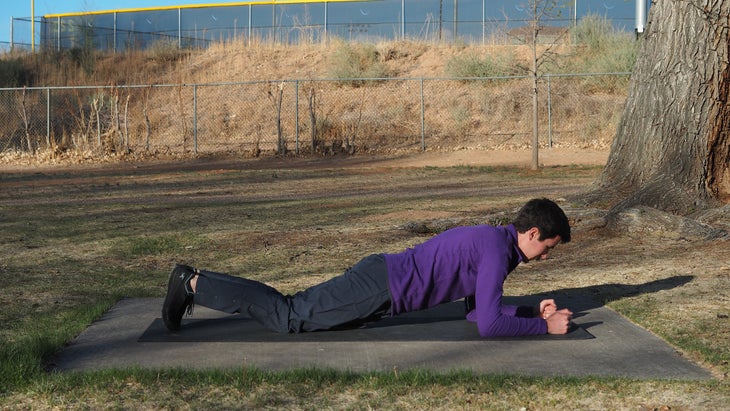
Modified Forearm Plank (Knee Plank)
What it does: Engages the same muscle groups as a full forearm plank (below), but with a shorter lever length, which decreases the difficulty. This is a great starting place if you’re coming back from an injury or extended time away from physical activity.
How to do it: Start on all fours. Place your forearms parallel to each other on the floor, with your elbows directly below your shoulders. Gently walk back your knees until your torso and upper legs form a straight line from your knees to your shoulders. Engage your core and your glutes to hold this position. Keep your neck in line with your spine, and your hips level and square—no arching, sagging, or tilting.
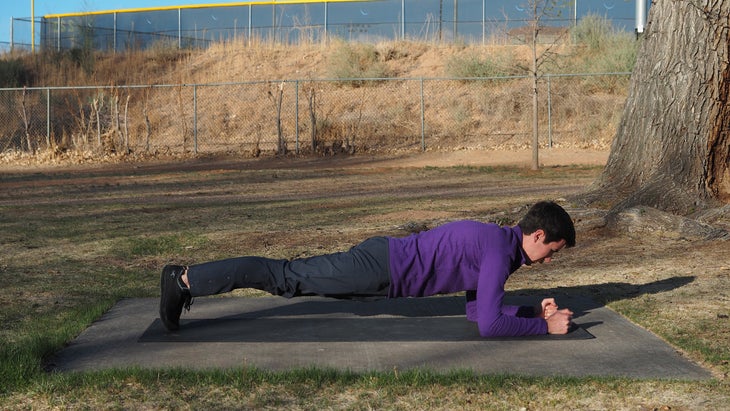
Forearm Plank
What it does: Builds strength and stability in core muscles, including the back and deep layers like the transverse abdominis, through an isometric hold.
How to do it: Kneel and place your forearms shoulder-width apart on the floor, with your elbows below your shoulders. Extend both legs directly behind you with your feet together and your toes tucked under so that your body forms a straight line from your heels to your head. Keep your core engaged, your back flat (no��sagging, arching, or tilting the hips), and your head up so that your neck is in line with your spine. Hold this position.
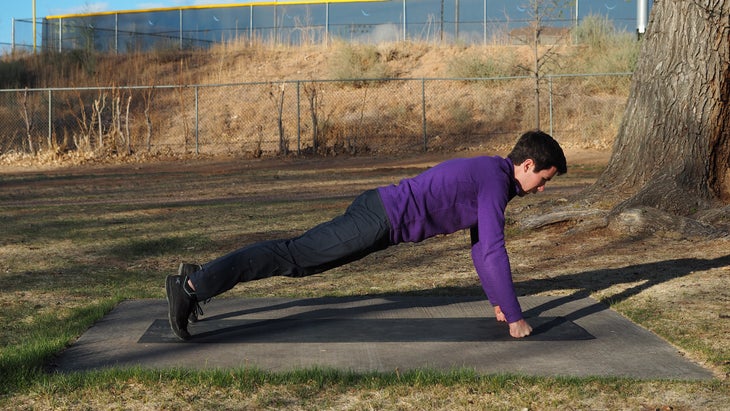
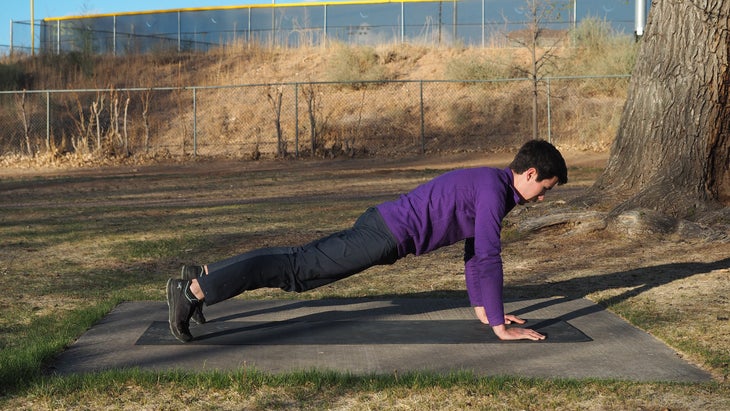
Front Plank
What it does: This variation is similar to the forearm plank, but requires more shoulder, arm, and wrist stability, especially if you do it on your fists instead of your palms. It’s also a great launching point for more challenging variations.
How to do it: Place your hands��directly below your shoulders��on the floor,��with your arms straight. Extend both legs directly behind you with your feet together and your toes tucked under so that your body forms a straight line from your heels to your head. Keep your core engaged, back flat, hips level, and neck in line with your spine. Hold this position.
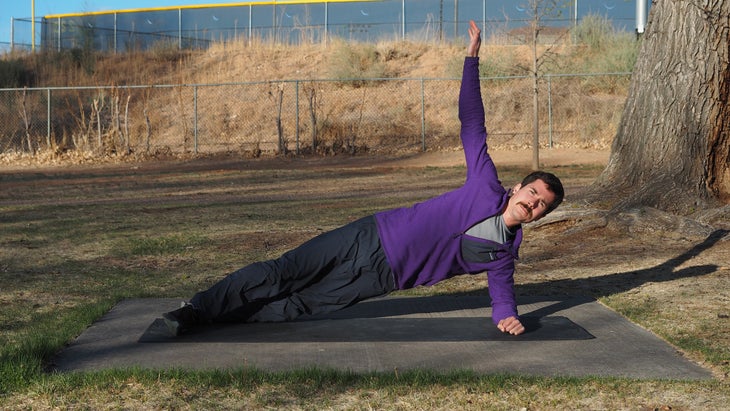
Side Plank (Low)
What it does: Strengthens the core with an emphasis on��the obliques.
How to do it: Start on your side with your bottom forearm on the floor and elbow bent to 90 degrees, directly below your shoulder. Straighten your legs and either stack or stagger your feet heel to toe (staggering will make it easier to balance). Then lift your hips until your body forms a straight line from your heels to your head. Raise your free arm vertically toward the ceiling. Hold this position, then repeat on the other side.
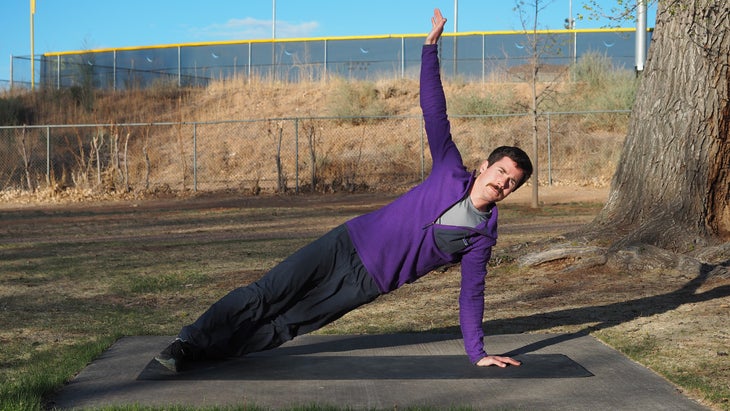
Side Plank (High)
What it does: Strengthens the core with an emphasis on��the obliques. This builds more shoulder, arm, and wrist strength than the low version.
How to do it: Start on your side with your arm straight and your hand directly below your shoulder. Straighten your legs and either stack or stagger your feet heel to toe. Then lift your hips until your body forms a straight line from your heels to your head. Raise your free arm vertically toward the ceiling. Hold this position, then repeat on the other side.
To make it harder and also increase shoulder activation, hold a dumbbell in your upper hand. Slowly bring the weight down to touch the floor next to your supporting hand, raise it again, and repeat.
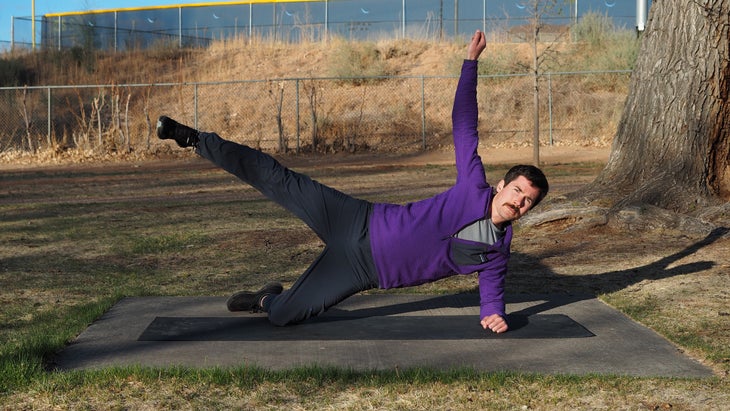
Glute Side Plank
What it does: Primarily targets the obliques and the��gluteus medius (a stabilizer muscle at the back of the hip).
How to do it: Start in a low side plank position on your forearm (described above), but with your bottom knee bent to 90 degrees (this generates better glute activation on both sides). Engage your core and lift your hips so that your torso forms a straight line. Keep your hips level and square. Then raise your upper leg as high as you can. Keep the upper leg straight and imagine driving your bottom knee into the floor. Hold this position, then repeat on the other side.
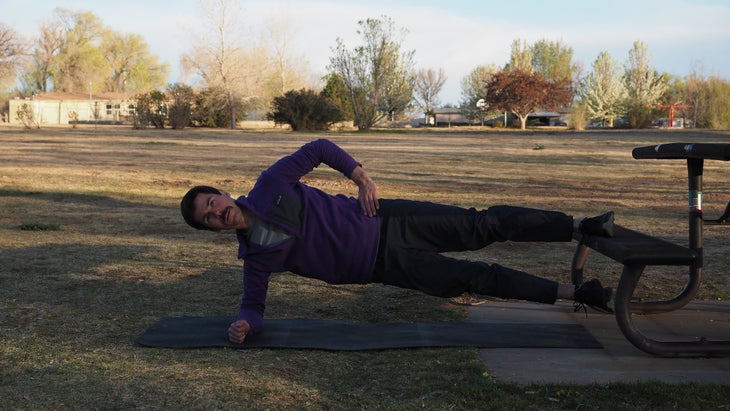
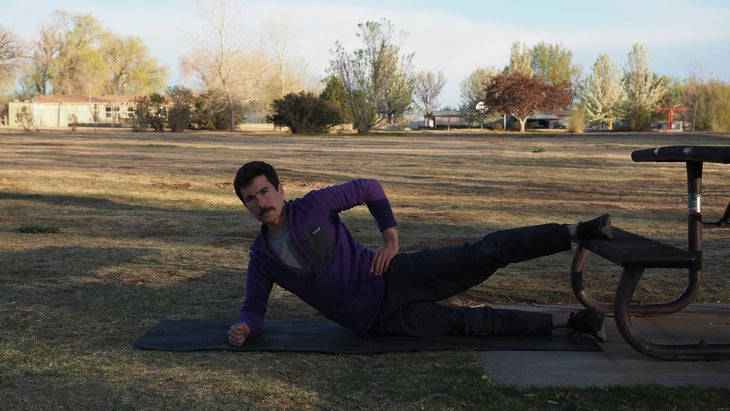
Copenhagen Plank
What it does: Targets the same muscle groups as a side plank (above) while firing up the hip adductors (inner thigh).
How to do it: Lie on your side with your upper foot elevated on a bench, chair, or coffee table. Your lower foot should float freely below without touching or weighting anything. If the bench is short, place your forearm on the floor, with your elbow directly below your shoulder. If the bench is tall, place your hand on the floor below your shoulder and keep your supporting arm straight. The idea here is to choose the arm position that will keep your body as close to horizontal as possible. Then lift your hips to enter a side plank. Your body should form a straight line from your feet through your hips and up to your shoulders. Hold this position, then repeat on the other side.
This one is easy to overdo, which can stress the hip adductors. If it feels too difficult, you can make it easier by positioning the bench farther up your leg, closer to your torso, which reduces the leverage. Modify as necessary.
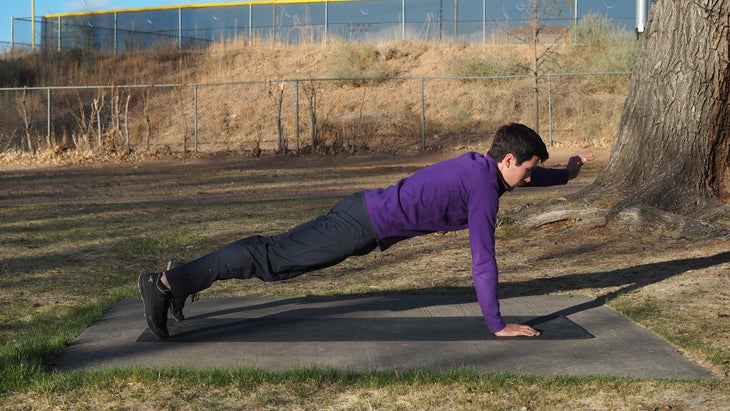
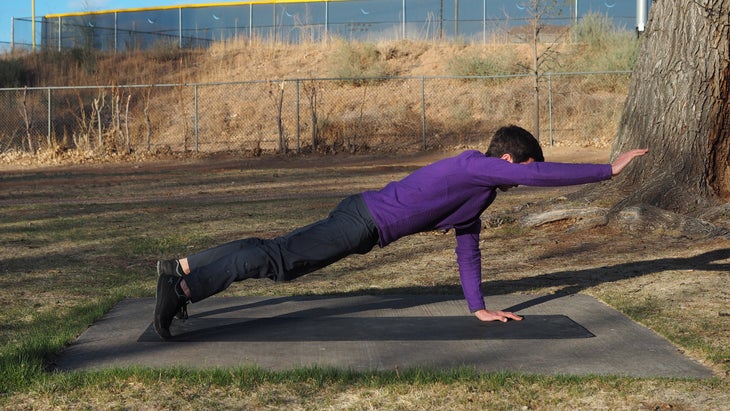
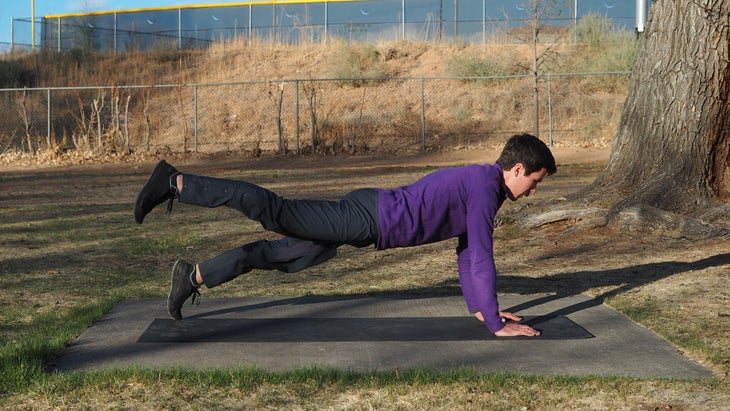
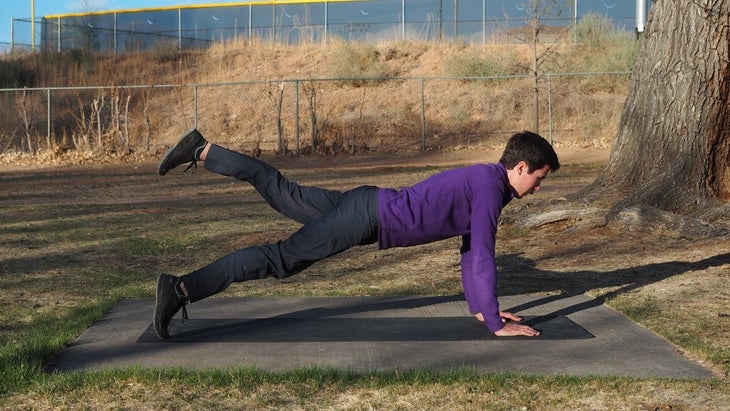
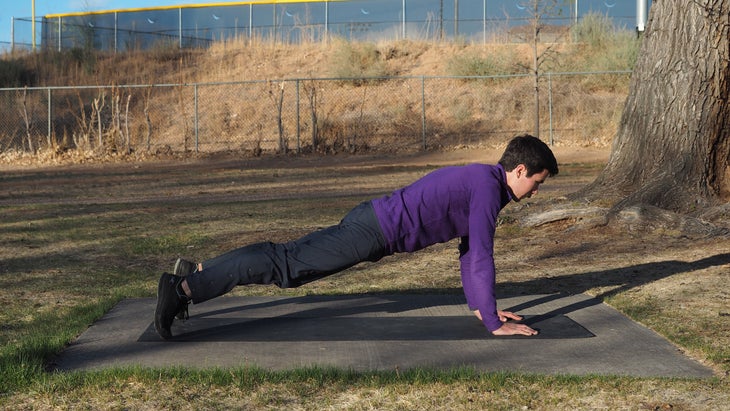
Clockwork Plank
What it does: By removing one point of ground contact, this variation challenges core stability and increases the difficulty of��a standard front plant. It’s also an easier progression to longer-duration three-point planks.
How to do it: Start in a front plank (described above), with your arms straight and your hands directly below your shoulders. Place your feet one to two feet apart. Maintain a rigid body position from your head to your heels. Then raise one arm straight in front of you, without rotating your shoulders or hips, and hold for five to ten seconds. Return to all fours, then lift the other arm for five to ten seconds, followed by a leg, then the other leg, and so on. Continue alternating between all four limbs, holding each in the air for five to ten seconds, for the duration of the plank variation.
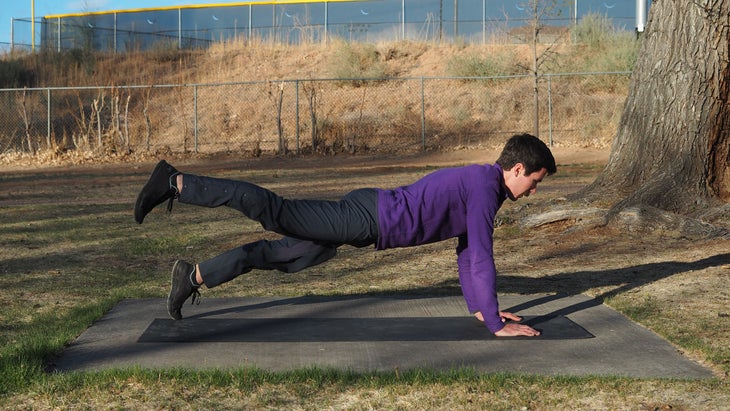
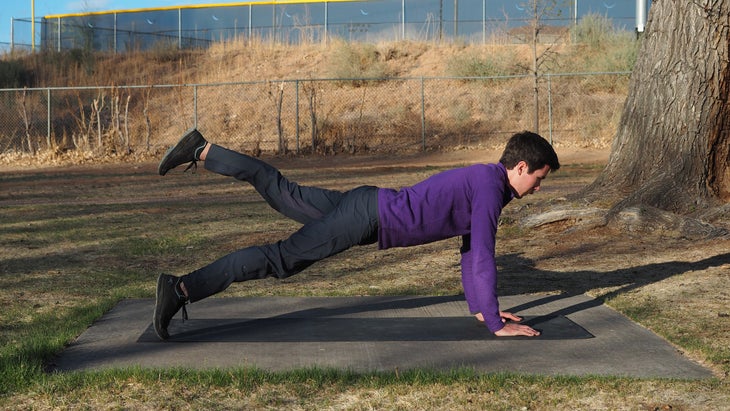
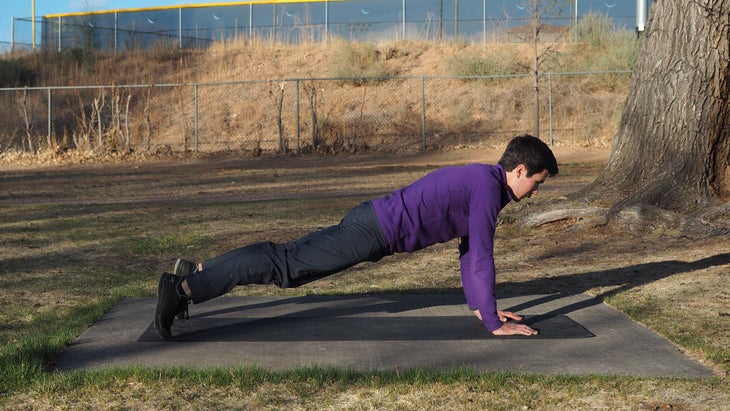
Three-Point Plank (Leg Raise)
What it does: Increases the difficulty of the clockwork plank, which alternates between limbs.
How to do it: Start in a front plank with your feet one to two feet apart. Maintain a rigid body position from your head to your heels. Then raise one leg as high as you can without rotating your shoulders or hips. Hold this position for the duration of the plank, then repeat with the other leg raised.
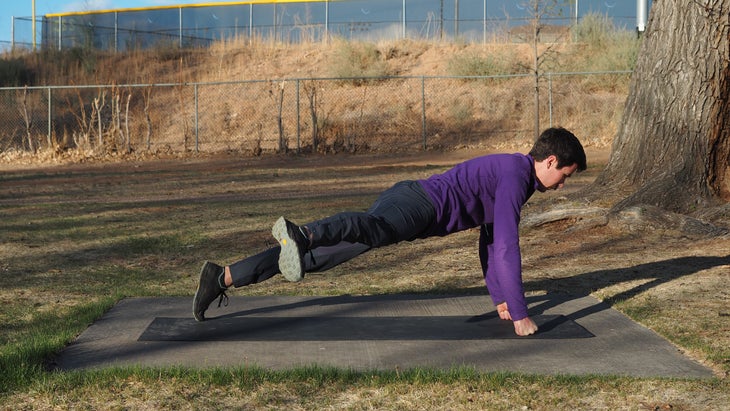
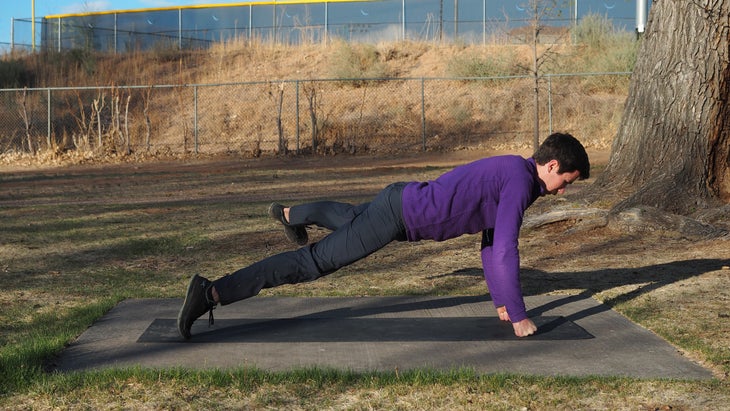
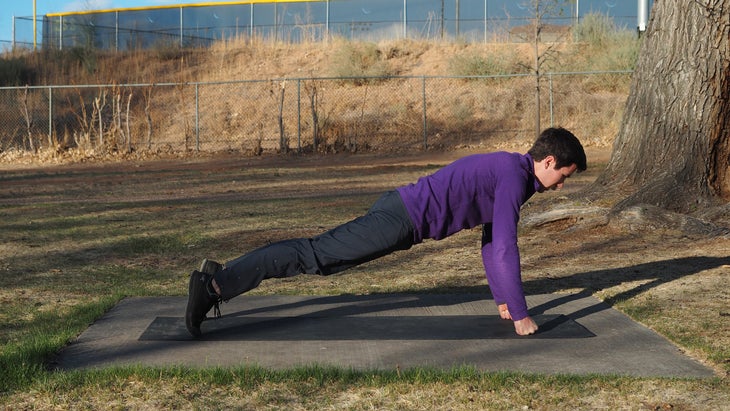
Side-Kick Plank
What it does: When you swing your raised leg out to the side, it acts as a lever that wants to rotate your hips, so your core must work harder for asymmetrical anti-rotational stability.
How to do it: Perform a three-point plank with a raised leg, as described above, but swing one leg out to the side as far as you can (keep it straight and parallel to the floor), for the duration of the plank. Repeat on the other side.
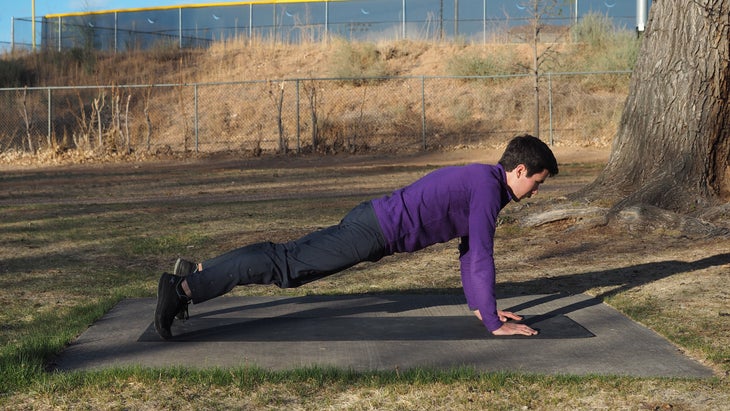
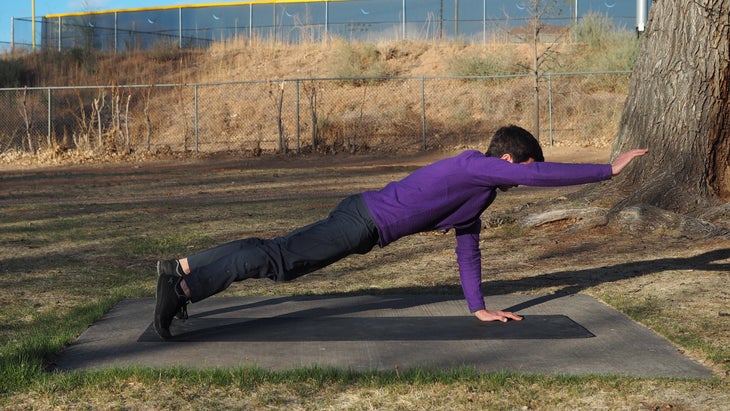
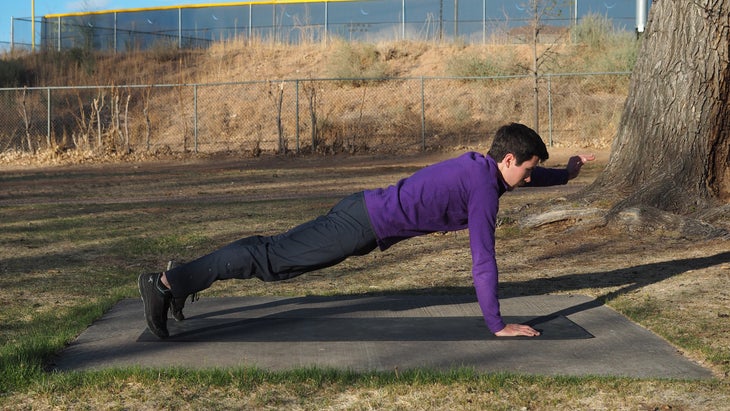
Three-Point Plank (Arm Raise)
What it does: Increases the difficulty of��the clockwork plank variation, which alternates between limbs. Most will find the three-point plank with an arm raised more difficult than a leg raised, since it places more stress on the supporting arm.
How to do it: Start in a front plank with your feet one to two feet apart. Maintain a rigid body position from your head to your heels. Then raise one arm straight in front of you, without rotating your shoulders or hips. Hold this position, then repeat with the other arm raised.
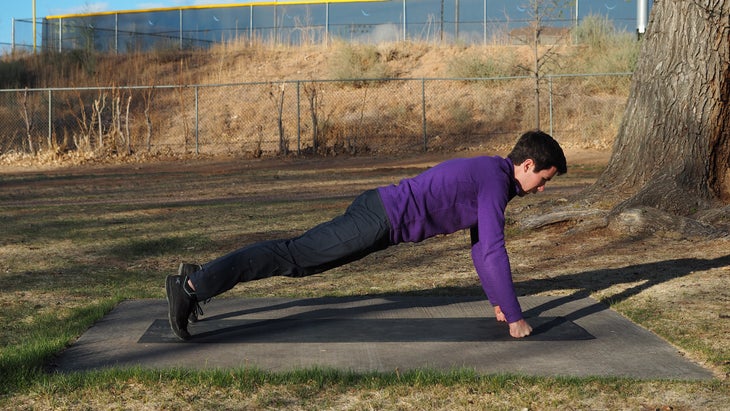
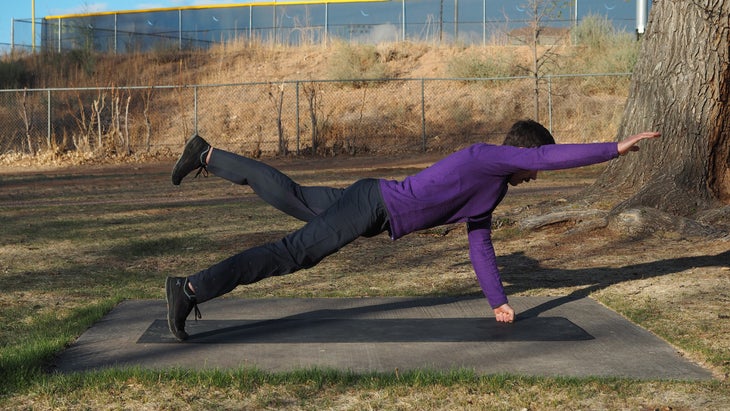
Two-Point Plank
What it does: Strengthens the entire core, and trains anti-rotational stability and cross-body coordination.
How to do it: Start in a front plank with your feet one to two feet apart. Maintain a rigid body position from your head to your heels. Then raise your opposite arm and leg simultaneously, as high as you can without rotating your shoulders or hips. Keep your core and glutes engaged to avoid hip sag. Hold this position, then repeat with the other arm and leg raised.
Make it harder by bending your supporting arm into a half push-up.
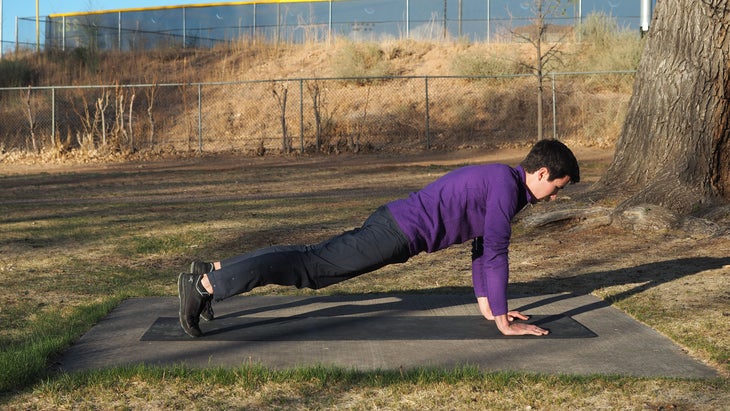
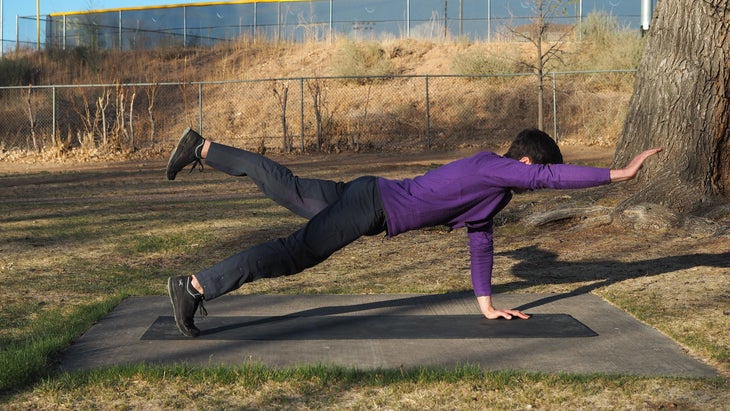
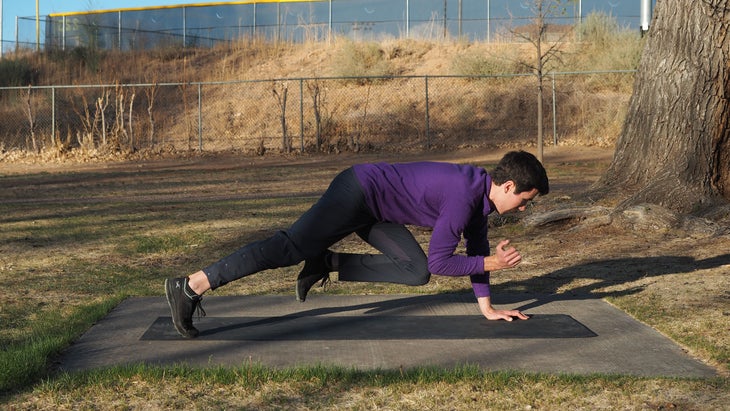
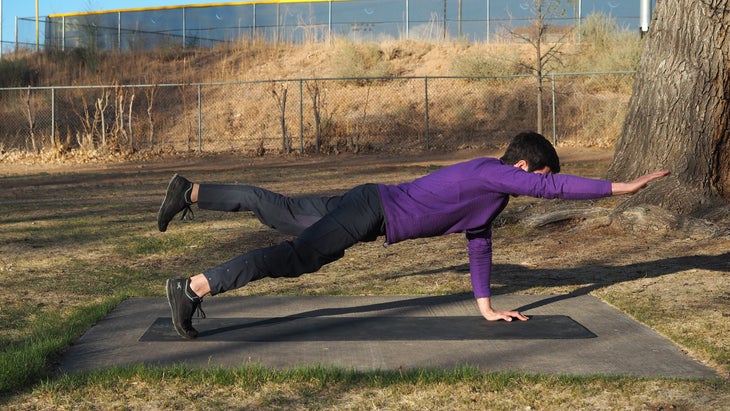
Knee-to-Elbow Plank
What it does: Introduces a little core flexion and extension into a two-point plank, while training cross-body coordination and control.
How to do it: Start in a two-point plank, as described above. Once you’re stable with good form, slowly draw in your raised leg and raised arm to gently tap your knee with your elbow beneath your chest. Reverse the movement back to a two-point plank position. Repeat continuously for the duration of the plank variation, then do it again with the opposite arm and leg raised. Focus on form and slow, controlled movement.
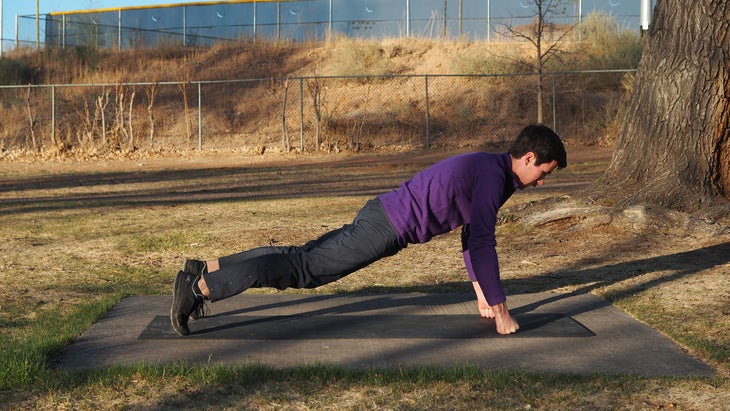
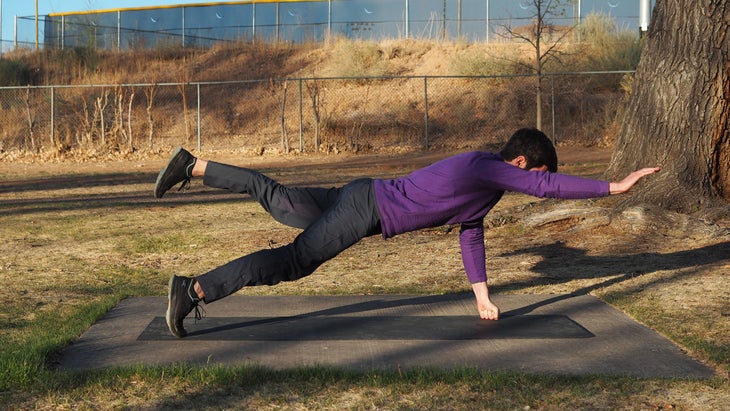
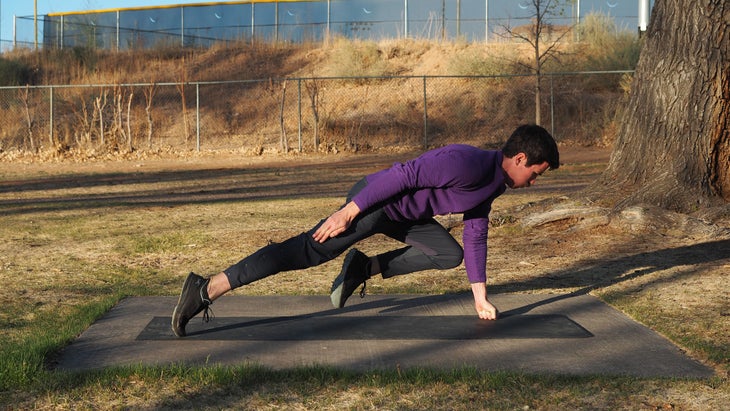
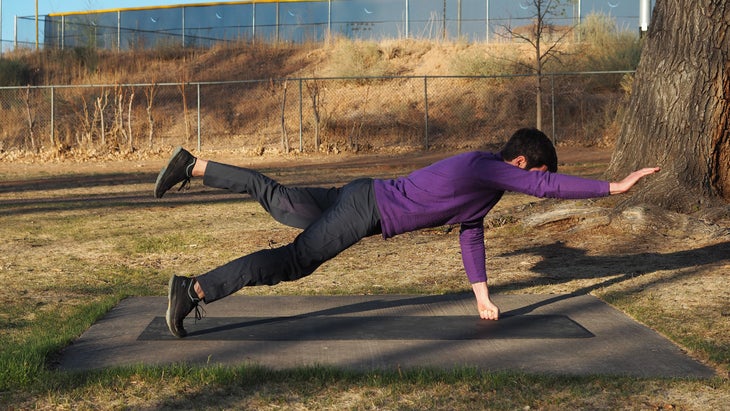
Swimmer Plank
What it does: Increases the stability demand and difficulty of a two-point plank, while training focus and coordination.
How to do it: Start in a two-point plank, as described above. Once you’re stable with good form, slowly draw your raised knee up to the elbow of your supporting arm while you simultaneously bring your raised arm down along your side (keep it straight). Slowly reverse the movement back to a two-point plank position. Repeat continuously for the duration of the plank variation, then do it again with the opposite arm and leg raised. Focus on form and slow and controlled movement.
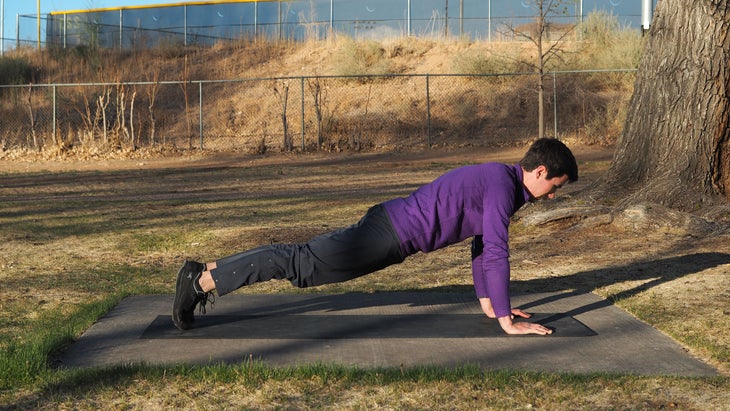
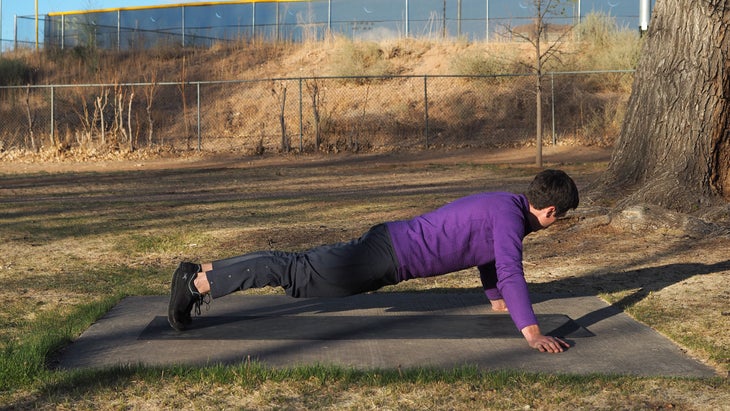
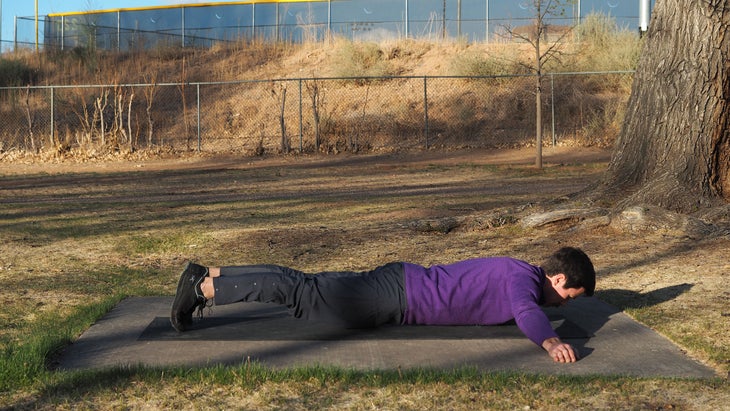
Iron-Cross Plank
What it does: Trains long lines of lateral tension through the arms as well as compressive chest strength.
How to do it: Start in a front plank then slowly walk out your hands to the sides into an iron cross-like position until your body hovers just above the floor, or as far as you can with good form. Hold this position. Maintain a rigid body position from your head to your heels.
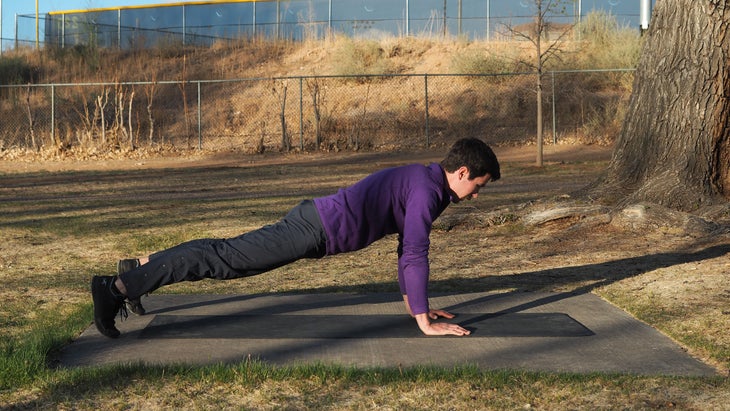
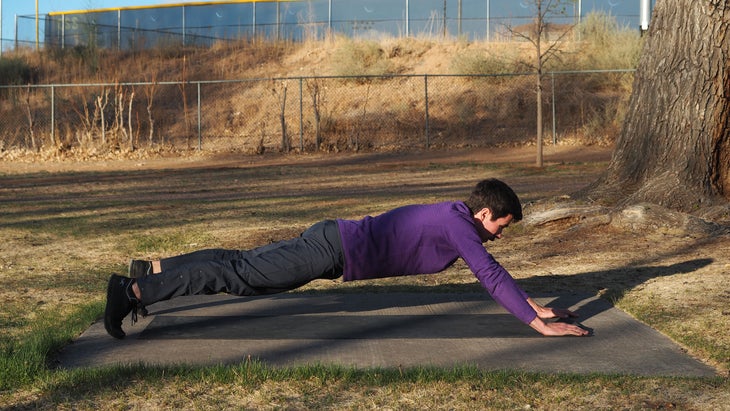
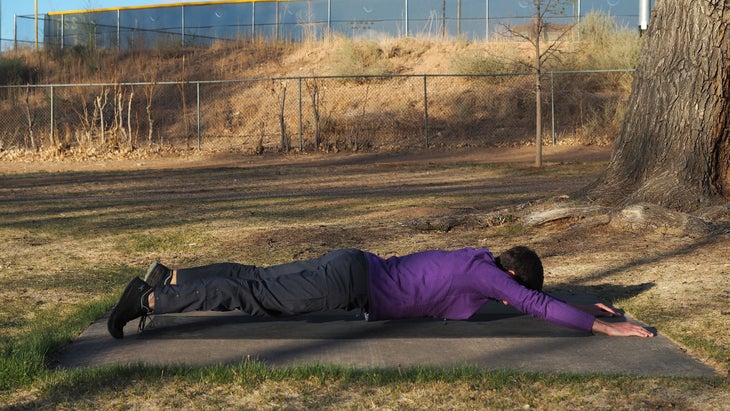
Mega Plank
What it does: Trains full-body strength and stability through long lines of tension, from the toes to the fingertips, in an extended body position—one of the most important core exercises for rock climbers.
How to do it: Start in a front plank, then slowly walk out your hands in front of you until your body hovers just above the floor, or as far as you can go with good form. Maintain a rigid body position from your head to your heels for this plank variation.
Follow Along
For an in-depth look at some of these movements, and to learn how to incorporate them into a circuit of your own, check out the video below.
